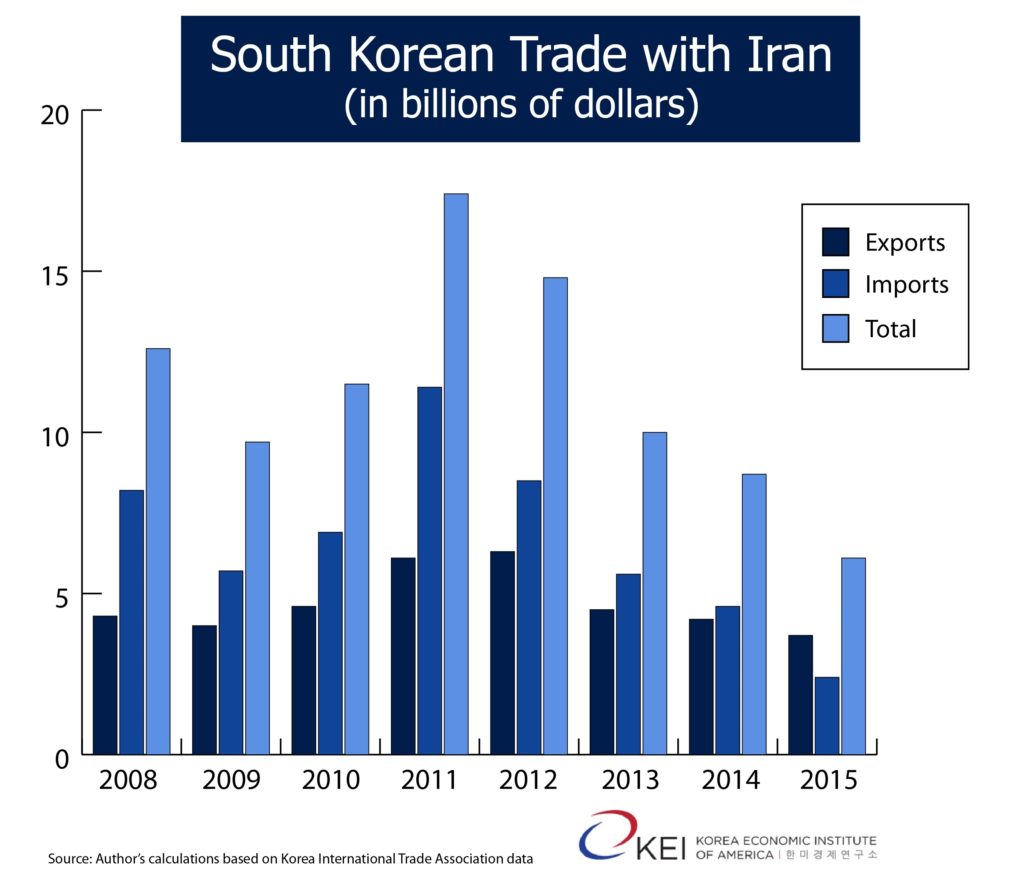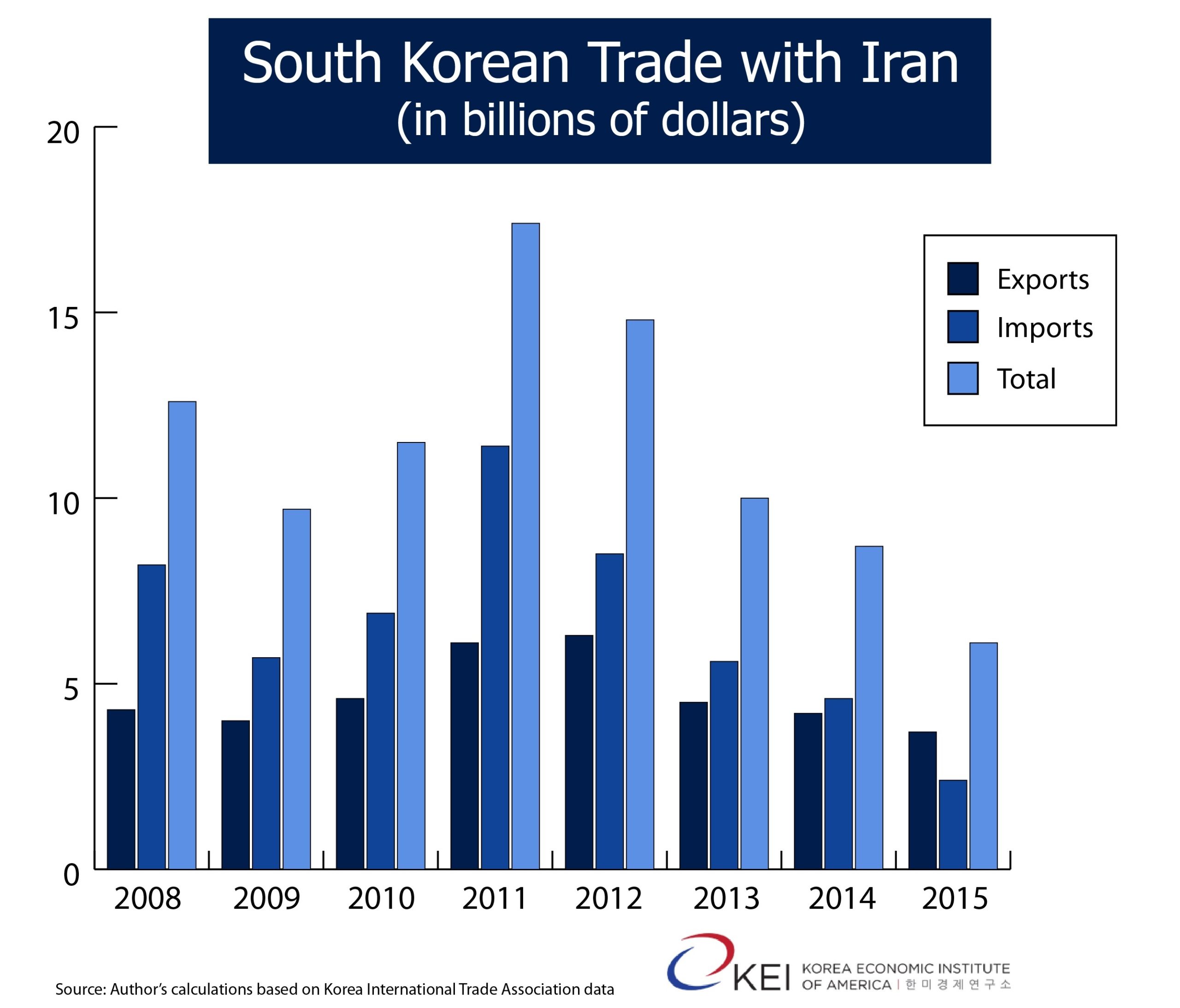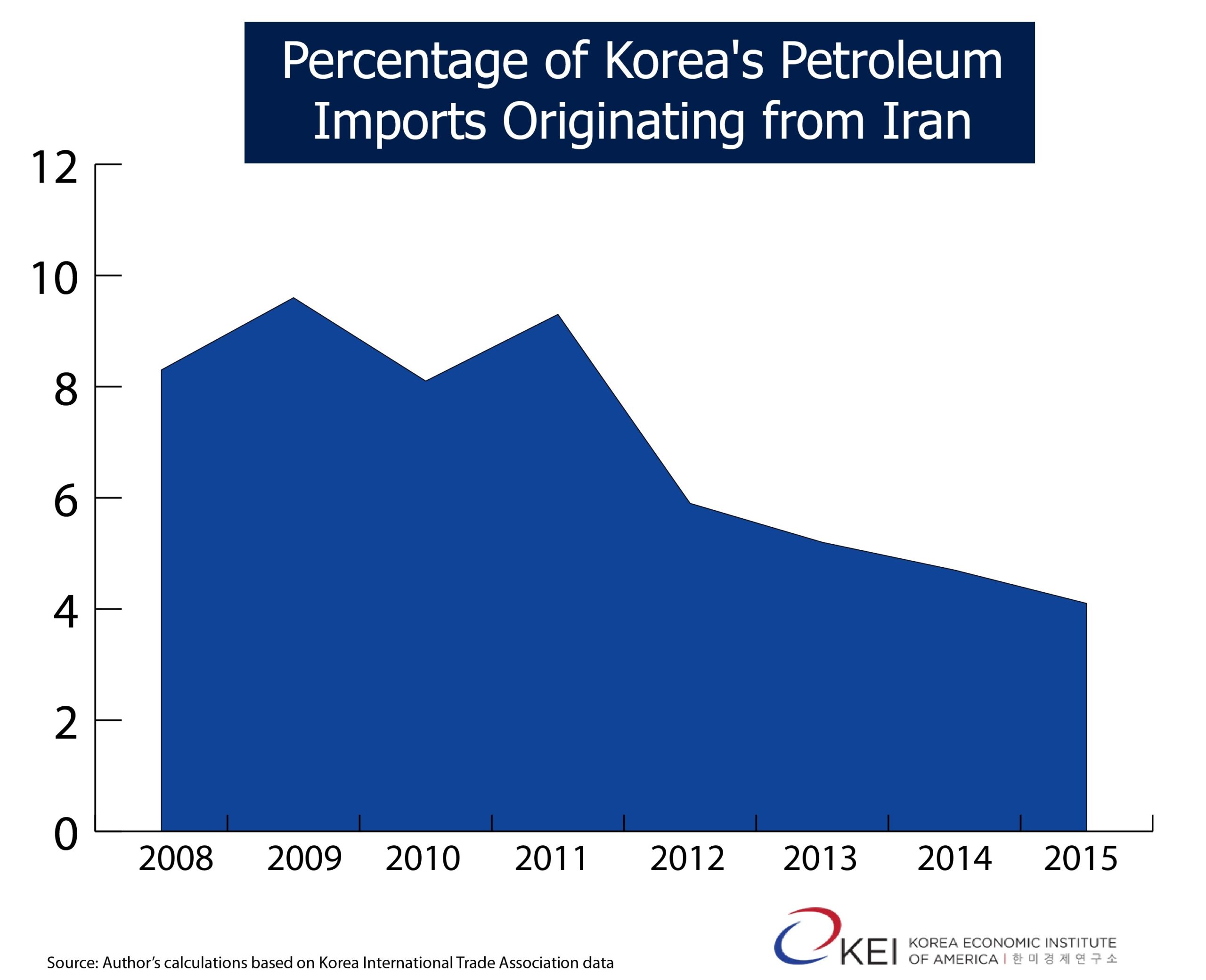The Peninsula
The Beginning of a New South Korea-Iran Relationship?

By Troy Stangarone
On May 1, South Korean President Park Geun-hye will travel to Iran for a three-day summit with the newly emerging regional power. Her visit will represent the first summit meeting between Iran and South Korea since the two nations established relations in 1962. However, while relations with Iran hold significant promise with the removal of economic sanctions, they also have the potential to be extremely complex.
The summit meeting comes shortly after the implementation of an agreement between Iran and the P5+Germany to place limits on Iran’s nuclear program in exchange for the removal of international sanctions that had cut off Iran’s access to international markets through financial, maritime insurance, and secondary sanctions.
For Asian, European, and in the future, American investors, Iran represents an appealing economic opportunity. With the world’s fourth largest oil reserves and largest reserves of LNG, coupled with a population of 80 million that is largely under the age of 30, Iran holds significant economic potential as both an energy producer and consumer market.
The Economic Promise of Improved Relations with Iran
For South Korea, Iran holds significant economic potential. The impact of the oil embargo on Iran and its removal from the SWIFT financial system has severely cut into trade between South Korea and Iran. Trade between South Korea and Iran had reached a high of $17.4 billion in 2011, the year before the EU oil embargo went into effect. Since that time, bilateral trade has declined by 65.5 percent to $6.1 billion in 2015.
From 2011 to 2015, the value of oil imports from Iran declined from $9.4 billion to $2.2 billion. This was due to both a drop in the price of Dubai crude, which was around $100 a barrel in 2011 but had dropped into the $40 range by 2015, and a drop in the overall volume of imports which fell by 54 percent.
However, trade with Iran was not only impacted in terms of petroleum imports, but South Korea also saw its exports to Iran decline by 39 percent over the same period. In 2011 South Korea was exporting over $235 million in refrigerators and $270 million in vehicles and even more in vehicle parts to Iran. By 2015, sales of refrigerators were down significantly, but sales of vehicles had shot up to more than $372 million after having been well below $100 million in the period of 2012-2014.
As Iran’s economy revives and its young consumer base sees increases in wages, South Korean consumer goods from cars, to smartphones, to televisions, to durable goods such as refrigerators are well placed to make significant gains.
Beyond consumer goods, Iran holds promise for helping to meet Seoul’s energy needs. South Korea lacks domestic petroleum reserves and is therefore dependent upon imports for its energy needs, for which petroleum based products account for nearly 40 percent of energy consumption.
South Korea can benefit from an enhanced energy partnership with Tehran in multiple ways. First, Iran can serve as another significant source for South Korea’s energy needs and if energy exports only return to pre-2012 levels we should expect to see South Korea’s imports of Iranian petroleum to at least double. Second, South Korea stands to benefit from investment projects in Iran’s energy industry, and the South Korean construction industry stands to benefit from Iran’s economic revival more broadly. Iran is expected to engage in $186 billion in construction projects between now and 2020. This boom in projects comes at a time when the Korean construction industry is struggling abroad. Lastly, as Iran looks to increase its exports of oil, South Korea’s shipping industry hopes to benefit from Iranian efforts to modernize its tanker fleet.
While there is significant promise in new economic ties with Iran for South Korea. Expectations should also be tempered. During the recent sanction period, trade between the two countries could only be settled through won-based accounts in Seoul. Because the financial institution involved in those transactions, Woori Bank, has U.S. dollar denominated accounts it found its access to the U.S. financial system at risk had its won transactions with Iran been in violation of sanctions. With sanctions now removed, however, European firms have seen slow progress in arranging deals with Iran due to the reluctance of banks to finance transactions with Iran due to new U.S. sanctions on Iran’s missile program. South Korean firms may run into similar difficulties.
South Korea’s Security Interests in the Middle East
As South Korea’s economic relationship with Iran develops, there is also a security dimension for Seoul to consider. In 2015, more than 80 percent of its petroleum imports came through the Strait of Hormuz. As imports from Iran increase, Seoul’s dependence on the Middle East for petroleum will likely only rise.
Dependence on the Middle East for energy imports creates risks for the South Korean economy. In the past, Iran has threatened to mine the Strait of Hormuz, an action which would put South Korea’s energy lifeline at risk. As a result, Seoul has a strong interest in peace and stability in the region. However, Iran continues to support groups such as Hamas and Hezbollah, and is engaged in a competition with Saudi Arabia for regional influence. Some have expressed concerns that an economically stronger Iran could further destabilize the region.
The North Korean Dimension
While South Korea playing a greater role in encouraging stability in the Middle East is an important dimension to the security portion of President Park’s trip, the more direct security interest for South Korea is Iran’s relationship with North Korea, which President Park is expect to raise with Ayatollah Ali Khamenei if they are able to meet.
As South Korea and the international community try to isolate North Korea, encouraging Tehran to distance itself from Pyongyang will be an important part of the trip. Iran and North Korea are known to have shared technology on missile development, and there has long been concern that they might be sharing information on their nuclear programs as well.
Beyond the nuclear and missile programs, Tehran may, if only indirectly, be supporting the North Korean regime. Iran and its proxy Hezbollah have been providing arms and financial support for the Assad regime in Syria. In 2013, Turkey seized gas masks, arms, and munitions from North Korea bound for Syria. Under the new UN sanctions, all arms purchase from North Korea are prohibited and South Korea should encourage Iran to push its allies to enforce the sanctions on Pyongyang.
Seoul’s outreach to Iran could be the beginning of a fruitful new relationship for South Korea and Iran. The initiative holds significant economic potential for South Korea, and the prospect to gain additional influence with a key partner of North Korea. Tehran stands to gain significantly from increased trade and investment with South Korea as it seeks to upgrade its infrastructure, boost its economy, and improve the life of its people. However, North Korea holds the potential to be a sticking point in any new relationship, and as long as Iran maintains cooperation with Pyongyang there is also the potential for it to be an increasingly complex relationship.
Troy Stangarone is the Senior Director for Congressional Affairs and Trade at the Korea Economic Institute of America. The views expressed here are his own.
If you are interested in more information on this topic, you can also listen to our podcast on the South Korea-Iran summit with Alex Vatanka of the Middle East Institute at keia.podbean.com.
Photo from peyman abkhezr’s photostream on flickr Creative Commons.


